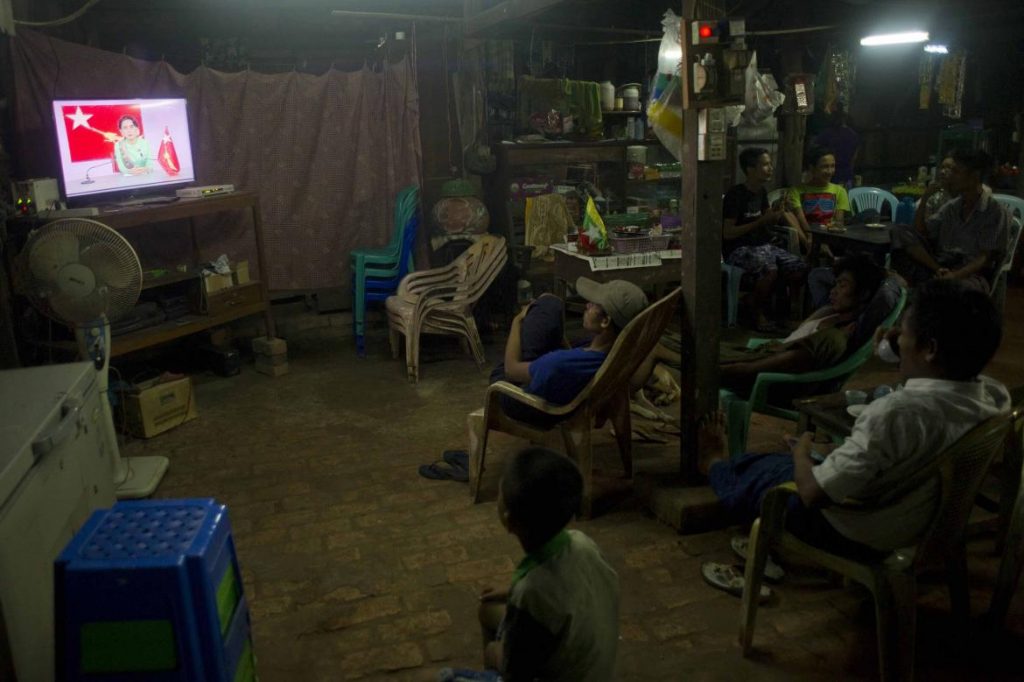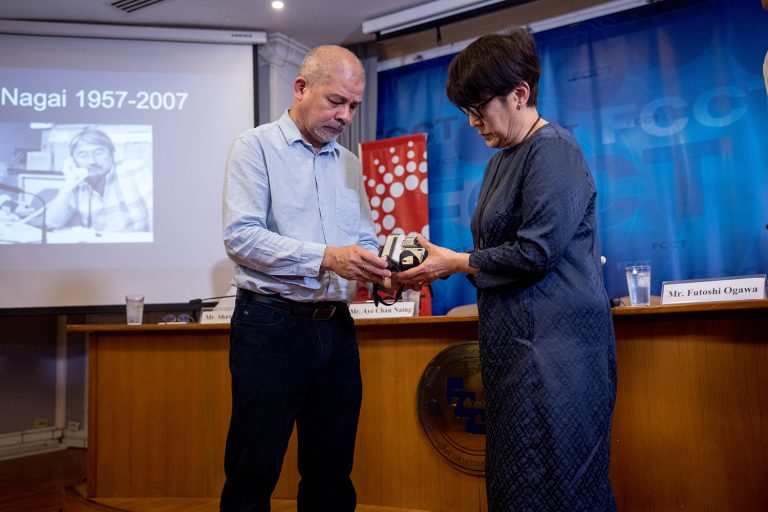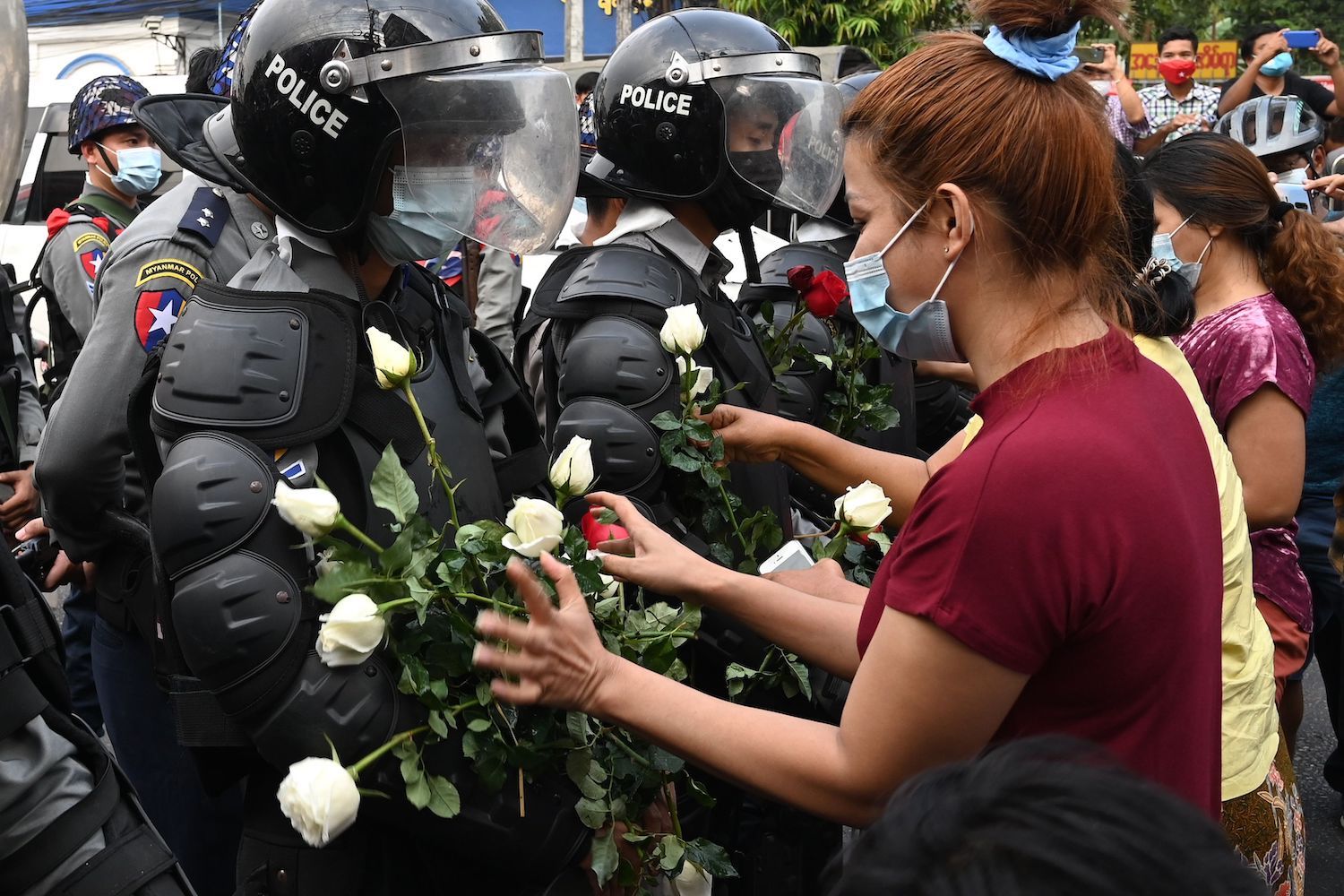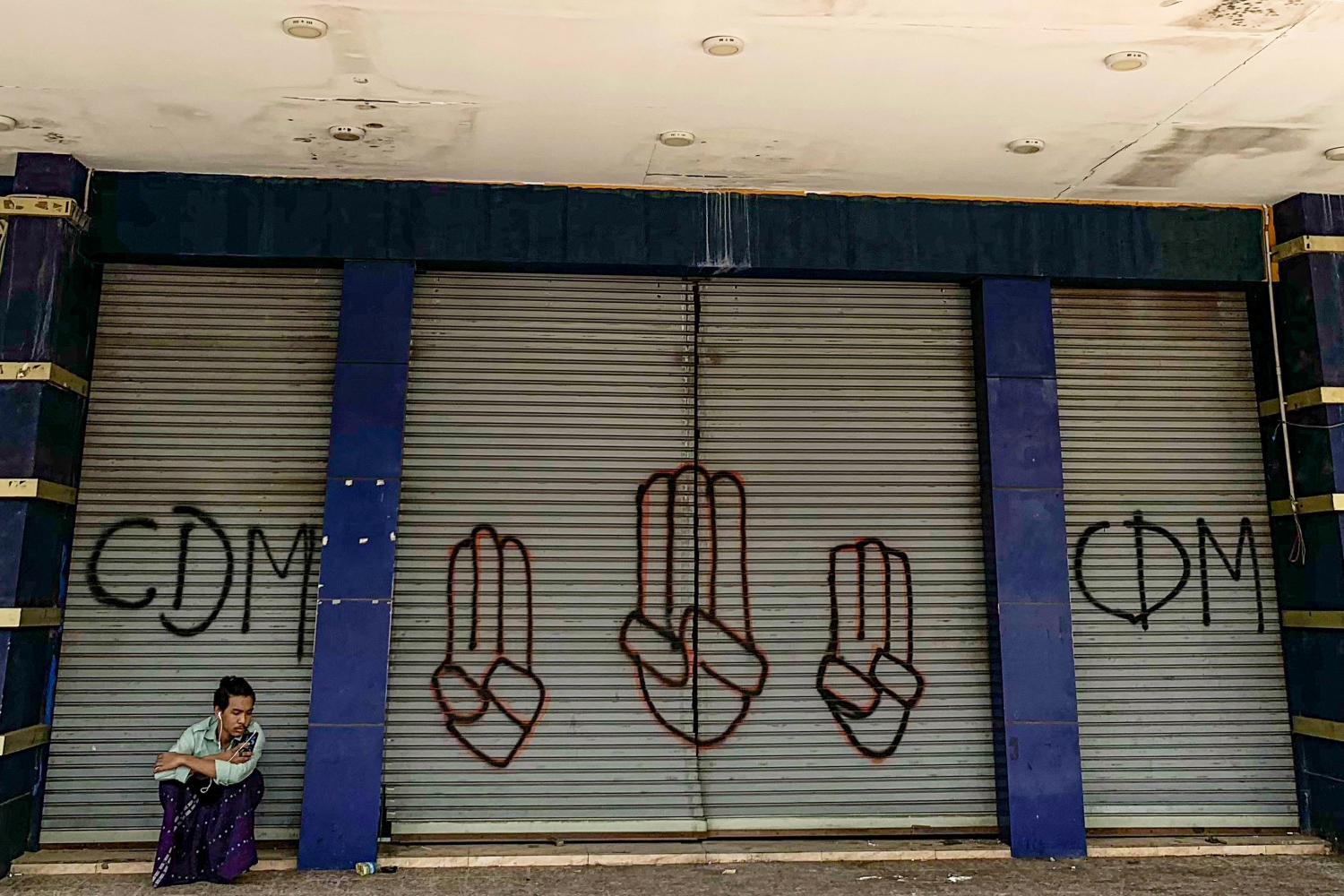The tight grip held by the government and the well-connected over the television industry is about to be eased and the winners will be the five new broadcasters and the viewing public.
By KYAW PHONE KYAW | FRONTIER
THE TERM “broadcast media” might sound a bit old-fashioned in other countries but in Myanmar it represents many new opportunities. For decades the only options for viewers have been the channels run by the government and well-connected businesspeople, but change is on the horizon.
On a Thursday evening in mid-August more than 100 businesspeople and journalists gathered at the Ministry of Information in Nay Pyi Taw for a presentation on the new opportunities in television broadcasting.
U Myint Htwe, the director-general of Myanma Radio and Television, and its chief engineer, U Hlaing Moe, said licences would be issued for five of MRTV’s 16 channels, using a digital video transmission system known as DVB-T2.
Hlaing Moe said the five channels would be able to use the 145 relay stations throughout Myanmar that enable the 11 existing MRTV-hosted channels to reach 88.7 percent of the population.
Support more independent journalism like this. Sign up to be a Frontier member.
Three of the five are existing channels – MRTV (Sport), Readers Channel and For Edu – which will be renamed. The other two channels will be brand new.
The channels will be free-to-air but viewers will need to buy DVB-T2 set-top boxes to access their content. The gathering was told that although the new channels would be able to use MRTV’s transmission infrastructure they would not be able to use its production facilities.
broadcast_mrtv_parliament.jpg

A session of parliament is broadcast on state-run MRTV in February 2011. (Frontier)
The officials said any person or organisation could apply for a licence to operate the new channels. But there’s a catch. They told the gathering that operators would be licensed as “content providers” rather than “broadcasters”.
This is to avoid complications with the Broadcasting Law enacted by the previous government in August last year, which stipulates that broadcast licences can only be issued by a Broadcast Media Council that was to be set up under the legislation.
However, the timeframe for forming the council has expired and the ministry is considering amendments to the Broadcasting Law, which has attracted sharp criticism from the media sector. Some have described the law as little more than a wish list of the Ministry of Information.
The National League for Democracy government has expressed willingness to amend the law, but the procedure is time-consuming. The ministry’s decision to issue content provider’s licences is seen as a short-term solution aimed at ensuring that the private sector can operate the five channels as soon as possible.
A reason for the high attendance at the ministry’s presentation is the lucrative advertising revenue opportunities offered by television.
Ads on television and radio are thought to account for about US$165 million (K200 billion) – or 75 percent – of the total $220 million spent on media advertising this year, and will likely total billions of dollars within a decade, U Khin Maung Win, deputy director of former exile broadcaster Democratic Voice of Burma told the Myanmar Times in March.
U Toe Zaw Latt, DVB’s Myanmar bureau chief, is optimistic about the move to open the television sector to new operators and says the NLD government and the Minister for Information, U Pe Myint, deserve credit for the decision.
“Even if there are many challenges, it is better than blocking opportunities for broadcast media,” Toe Zaw Latt told Frontier, adding that DVB, which began with shortwave radio broadcasts from Oslo in 1992, would be submitting an expression of interest for one of the five licences.
jtms_skynet08.jpg

Skynet satellite dishes lined up along a street in downtown Yangon. (Theint Mon Soe — J / Frontier)
However, the opportunities will not come without challenges.
Ko Zarny Win, the editor of the Myanmar Now news agency said that although he welcomed the prospect of new television channels they would face human resource problems.
“It will be difficult for the new channels to find enough technicians and journalists,” he said.
Toe Zaw Latt said there were about 4,000 journalists and technicians working in privately-owned media in Myanmar. This included 2,000 at SkyNet and 1,000 at Forever Group, he said, citing figures quoted at public events by representatives of the two broadcasters.
“Journalists who work in broadcast media need journalism as well as technical skills,” he said, adding that it would take time to train all the broadcast journalists needed for the five new channels.
Myint Htwe and Hlaing Moe told the Nay Pyi Taw presentation that although the five new channels would be able to use MRTV’s infrastructure, they would have to buy transmitting equipment that would cost $74,720 (about K90.5 million).
Successful newcomers would also have to pay a one-off fee of K8 million to the company appointed to assess licence applications, as well as a yearly satellite fee of $5,400 and K20 million a month to MRTV for using its infrastructure. In terms of investment costs, that’s just the beginning.
The new broadcasters will also need to build studios and cover the cost of linking them by fibre optic cable to MRTV’s Yangon premises.
Viewers, meanwhile, will pay $15 for the set-top boxes.
Hlaing Moe said the government had so far distributed 450,000 set-top boxes that would provide access to 16 channels, including the five new ones, at the original price of $15. The set-top boxes would also be available in rural areas, he said.
If a household is defined as having four members then the 450,000 set-top boxes will provide entertainment and information for 1.8 million people, or nearly 4 percent of the population.
Toe Zaw Latt said a one-off payment of $15 to access channels free-of-charge forever was not expensive. “If the content of the new channels is good, $15 is not much,” he said.
Viewers in Myanmar can watch either analog free-to-air channels or digital technology pay channels.
Of the country’s nine analog channels, MRTV and military-owned Myawaddy TV operate four, SkyNet operates three and Forever Group runs two.
The quality of content will be decisive for attracting audiences in what will become an even more competitive market once the new licences are issued.
“The content of the existing channels is not as good as the programs on international broadcasters and if the newcomers can fill this blank, they will be OK,” said Zarny Win.
The ministry has not imposed content restrictions for the new channels, something that has been welcomed in the media sector.
U Thiha Saw, the secretary of the Myanmar Press Council, told Frontier the lack of restrictions meant that the presentation of news on the new channels was likely to be more interesting than the formal style of state-owned channels. This would help the new channels to attract viewers, he said.
Ownership of the new channels will be open to Myanmar citizens or companies as well as foreign joint-ventures.
However, Myint Htwe cautioned that a forthcoming investment law would set limits on the percentage share that foreigners could have in media businesses. He said that after the Broadcast Media Law was amended, all operators, including MRTV, SkyNet, Forever Group and Myawaddy TV, would need to re-apply for broadcast licences. Licence applications would have to conform to the amended Broadcast Media Law and the new investment law, he said.
Myint Htwe had confirmed at a news conference about the government’s 100-day plan that SkyNet and Forever Group would not be eligible to apply for one of the five licences.
Thiha Saw predicted that the first five new TV stations would have a market advantage over subsequent broadcasters.
The prospect of receiving one of the licences has aroused intense interest in the media industry. Some media houses, with no prior experience in broadcasting, have already begun hiring television journalists and technicians in the hope that their licence application is successful.
New and existing players in the media sector are busy fine-tuning their licence applications before a September 22 deadline. In about six months, viewers can look forward to a greater variety of entertainment and news when they turn on their televisions.
Top photo: People watch a television screen as Daw Aung San Suu Kyi makes a speech prior to last year’s election. (Ye Aung Thu / AFP)







